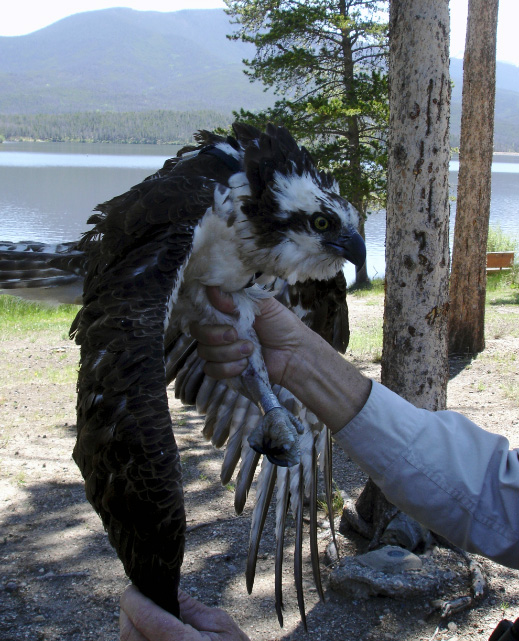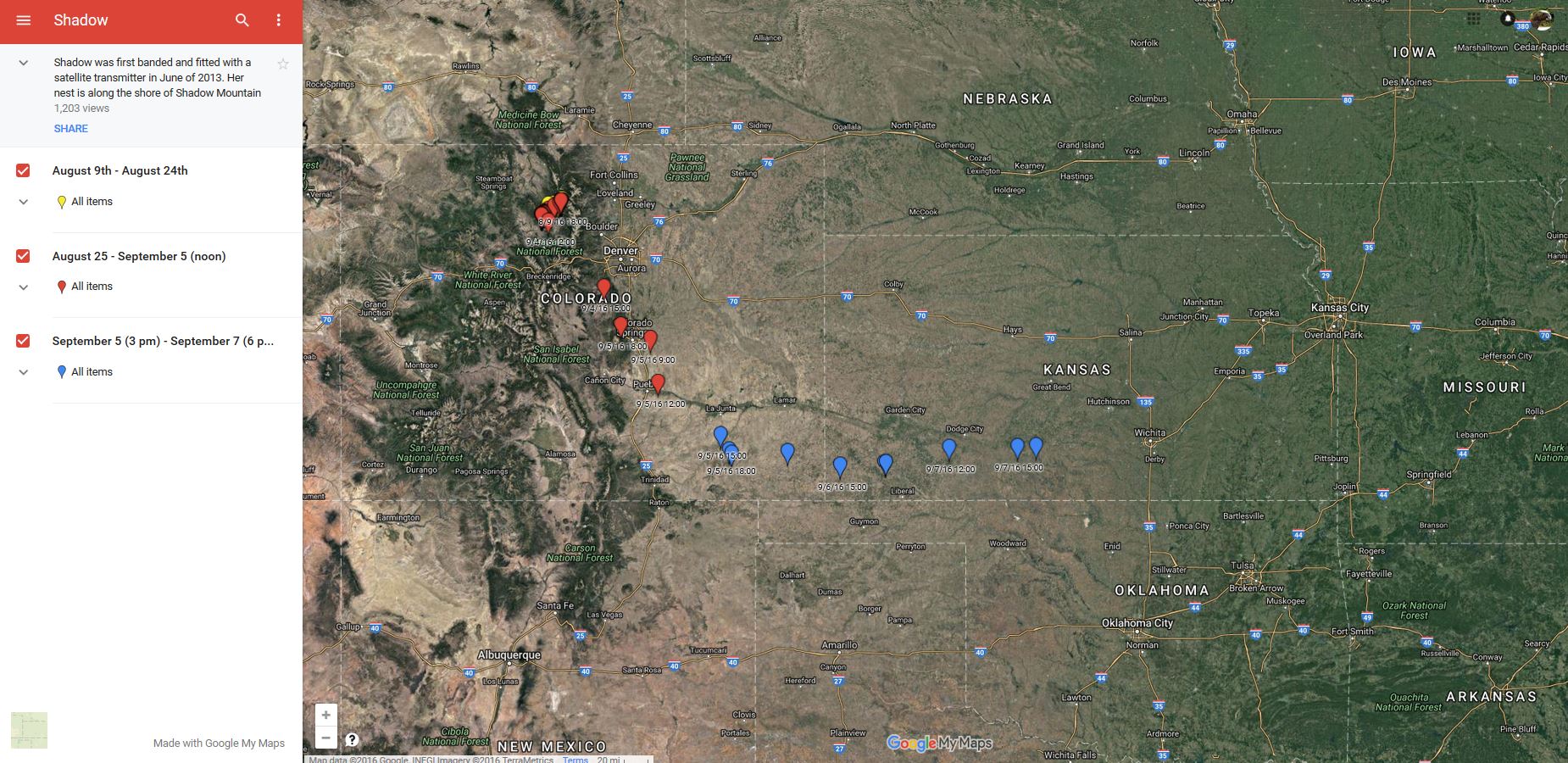Migration is a mysterious thing.
Birds continue to confound scientists with this behavior, even when it seems like we’re starting to figure it out. Although extensive knowledge about migrating birds has been gathered over the centuries, the scientific community is still relatively in the dark about the details of this process. Efforts continue to better understand migration, and so birds are banded and tracked all over the world. Oftentimes while migrating birds become lost or killed and valuable data is lost. Then sometimes, there comes a bird like Shadow.
In the summer of 2013, Bird Conservancy of the Rockies alongside US Forest Service and Rocky Mountain National Park scientists went out to Rainbow Bay at Lake Granby and the shore of Shadow Mountain Reservoir to give two Ospreys the chance help solve the mystery of migration. The team proceeded to capture two birds who were named according to their summer nesting sites: Rainbow and Shadow. Mountain Parks Electric helped with equipment tall enough to reach the nests, and shaded the baby chicks while their parents received satellite transmitters. After the team took measurements and other data. Rainbow and Shadow were then released back to their chicks.
Over the next several months, transmissions came in as the Ospreys tended to their young and prepared for migration. When the two birds took off toward Mexico for the winter, the first thing they did was cross the continental divide, and head down the Central flyway. The tracking data revealed that both birds decided to stay for the winter, Shadow landing at Laguna Madre Biosphere Reserve just south of Texas, on the Gulf of Mexico and Rainbow further south near Tamuin.
Those tracking the pair of travelers were thrilled at how much new information was coming in about Osprey migration and excited to learn more from the return flight.
That’s when Shadow suddenly disappeared.
In the spring of 2014, Shadow’s transmitter stopped sending. Rainbow also went quiet around the same time. No one knew what had happened to them. Birds that are tracked often become “lost” and go silent, so it was not something to be very alarmed about. Often a transmitter simply comes off. Over the next two years, the teams following Rainbow and Shadow had all but given up on them.
Rainbow continues to be missing in action, but Shadow’s story isn’t done yet. On June 16th of this year, Bird Conservancy and our partners were trapping and outfitting Osprey at Lake Granby near Shadow’s old nesting spot. There was a large female osprey rearing several chicks. When the team captured the bird, they discovered that this was none other than Shadow herself! She had returned to the same nest where she’d been rearing her chicks for years. The team concluded that her transmitter had simply fallen off two years ago when she went ‘missing.’
The team refitted Shadow with a new transmitter and again returned to her nest. Doreen Summerlin, Wildlife Biologist with Arapaho-Roosevelt National Forest, reported that Shadow was seen feeding three nestlings before beginning her migration journey south. By September 4th, she was on the move! Her last location fix on September 7th revealed she is not following the Arkansas River toward Texas as she did in 2013. Instead, she has taken a hard turn to the East near Sun City, Kansas. That is about 300 miles from her previous location on September 5. Osprey can cover huge distances very quickly. In 2013, Shadow didn’t begin migrating until September 15th and it took her nine days to travel 1,100 miles to her wintering site just south of Texas in Mexico on the Gulf of Mexico coast at Laguna Madre Biosphere Reserve. It will very interesting to see if she eventually goes to the same place this year to spend the winter!
With the help of birds like Shadow, as well as the teams of people that make this research possible, we are gaining tremendous amounts of information about not only their migration habits, but also nesting behavior. For instance, we learned that mothers rarely left their nests until the chicks matured and became independent. We look forward to seeing Shadow’s return trip north in 2017, and unlocking more secrets about the migratory habits of the magnificent osprey!
MORE INFORMATION:
To learn more about this project, contact Jason Beason, Special Monitoring Projects Coordinator
You can view a current map of Shadow’s movements by clicking here.
Read about Rainbow and Shadow in Ski-Hi News back in 2014 here.
Take a self-guided osprey tour of Lake Granby and see Shadow for yourself! Download the USFS/USDA brochure here.
Our partners on this project include the National Park Service, Colorado Parks and Wildlife, Mountain Parks Electric (provider of bucket trucks for capturing Shadow) and the U.S. Forest Service.







